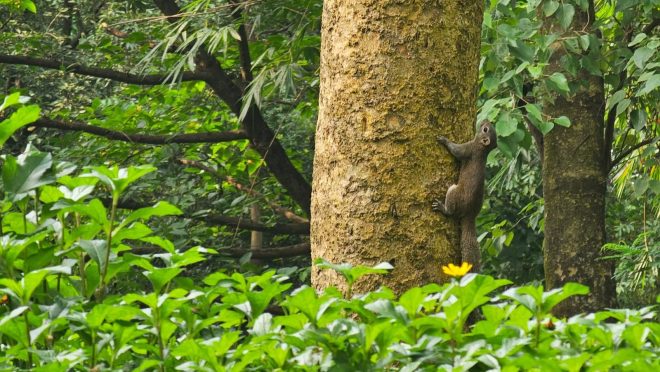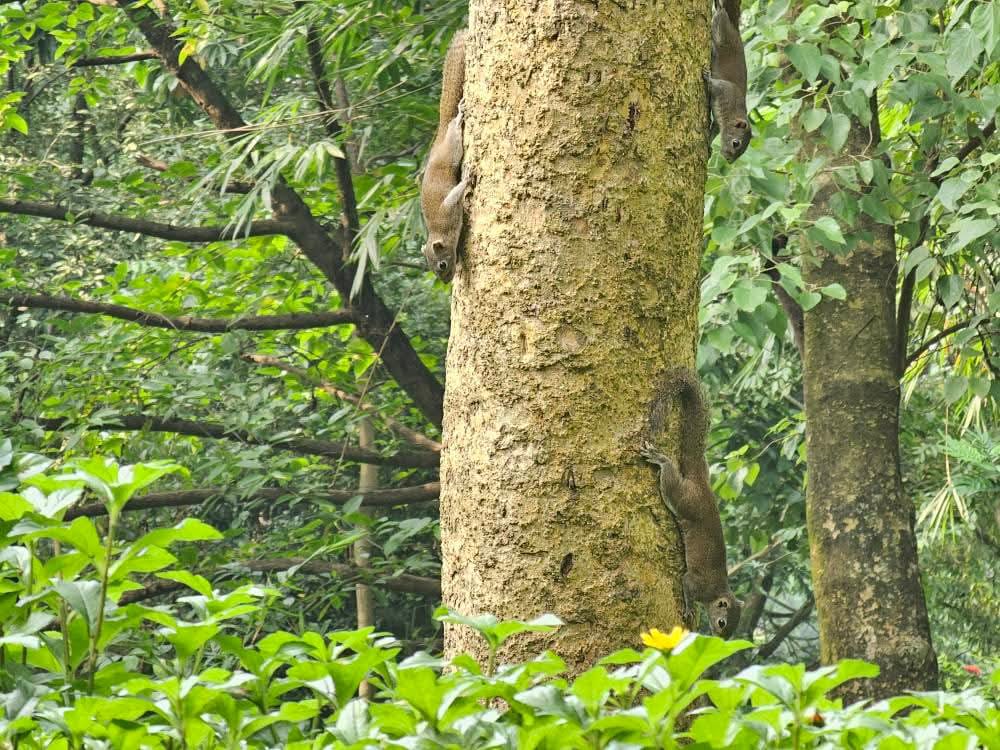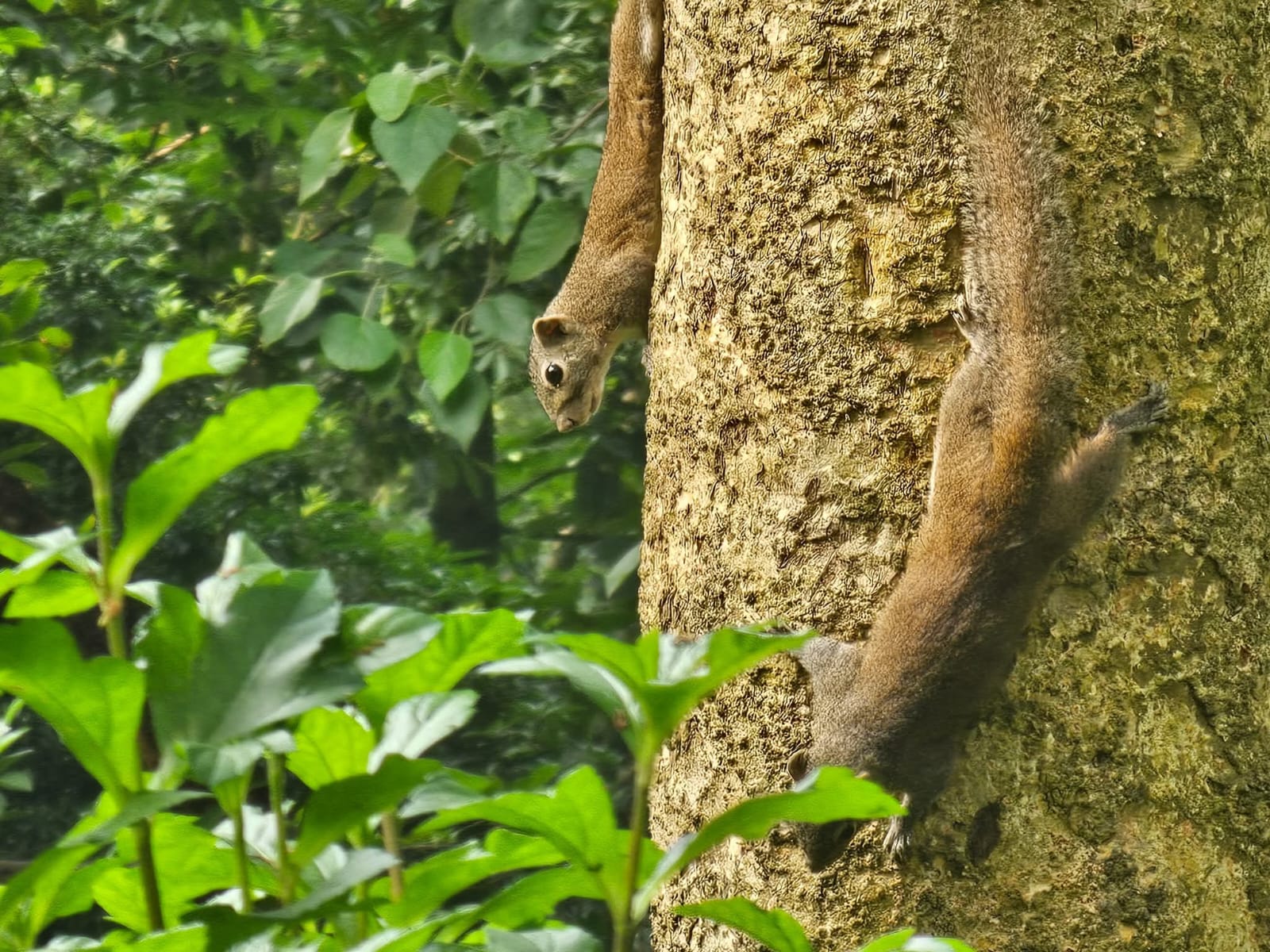Branch-hopping Squirrels of Jahangirnagar University
Branch-hopping Squirrels of Jahangirnagar University

The time was 1 pm. The sky was covered with dark clouds, and a drizzle was still falling. After several days of rain, the lakes were nearly full. Normally, there would be classes at this time, but today there were none.
While strolling by Murad Chottor near the department, I noticed a few tiny, bushy-tailed, playful squirrels darting from one tree branch to another before disappearing somewhere out of sight.
Jahangirnagar University is a campus that serves as a biodiversity sanctuary, where squirrels, tree snakes, civets, monkeys, and migratory birds in winter are commonly seen. However, experts say that biodiversity at the university has declined. Numerous trees have been cut for development projects, lakes have been filled, and bird flying zones have been destroyed.

Before the establishment of Jahangirnagar University, this area was part of Madhupur Garh. The natural forests, ponds, and thickets provided a habitat for various wild animals, including squirrels, monkeys, and foxes. Particularly, the shalbon, jackfruit, mango, Kadbel, and other fruit trees on campus offered a safe haven for squirrels. Even after the university was established in 1970, squirrels remained plentiful.
Thanks to conservation policies that preserved trees rather than cutting them down, their habitats have largely remained intact. In the 1980s and 1990s, environmentalists and wildlife researchers at the university identified squirrels as a part of the campus’s natural heritage. Over time, the Department of Zoology and other environmentalists have studied squirrel breeding, feeding habits, and behaviour.

When asked about the squirrels, Fahim Montakim, a student of the English Department, said they can be seen playing across the campus, including Murad Chottor. Squirrels are an integral part of Jahangirnagar University’s environment. Many people fear them, thinking they are aggressive, but we should behave in a friendly manner towards them. We can help in their reproduction, and we must ensure not to scare or harm them. In short, these little squirrels are a part of our campus wildlife, and it is our responsibility to protect them. From preserving trees to saving wildlife, we must act responsibly and conscientiously.


